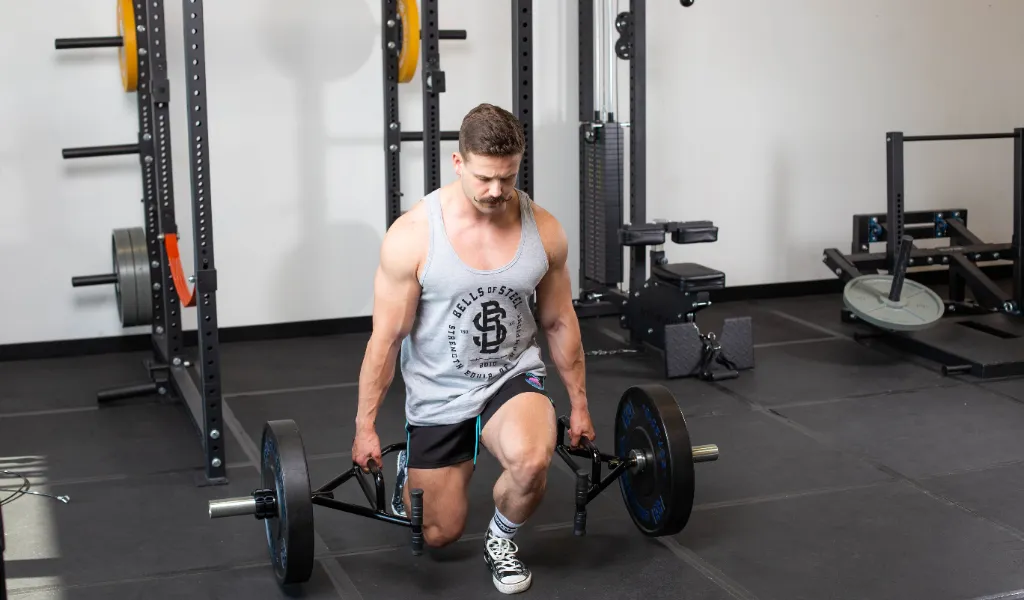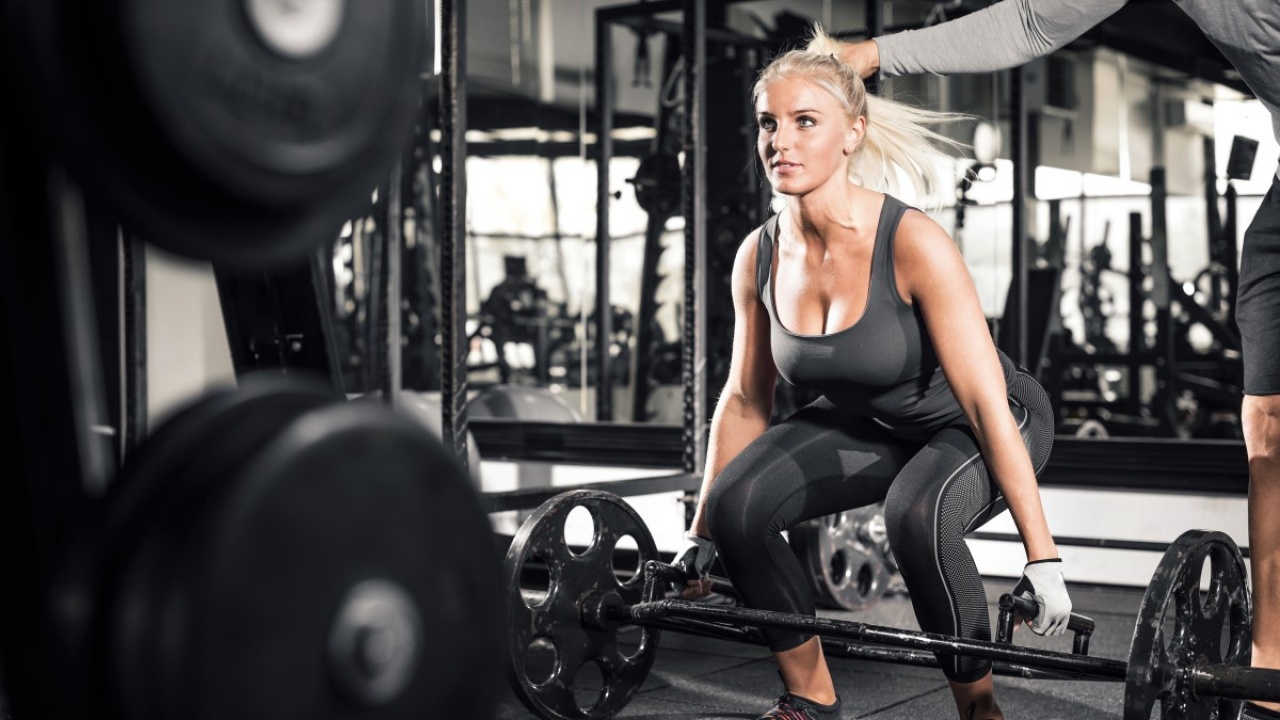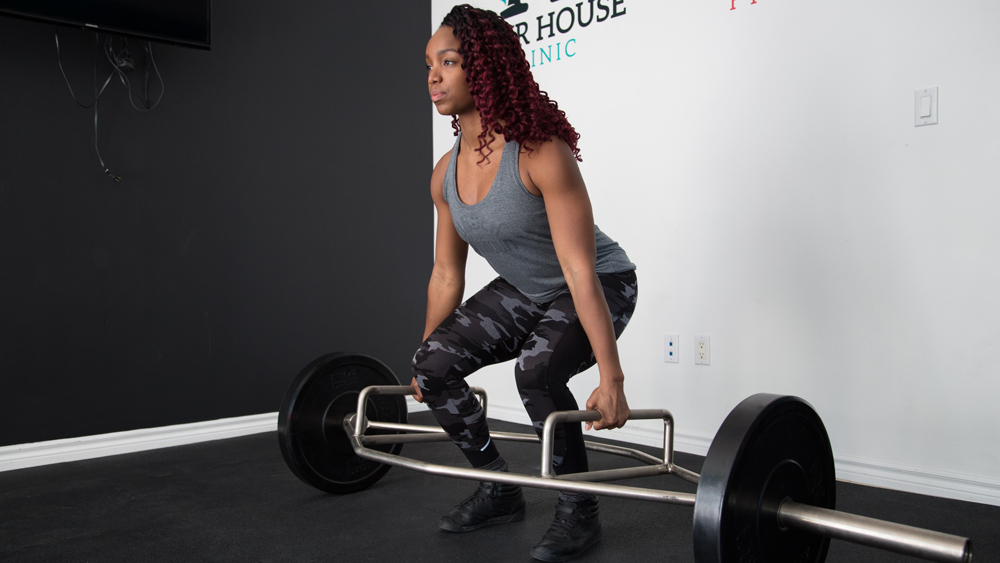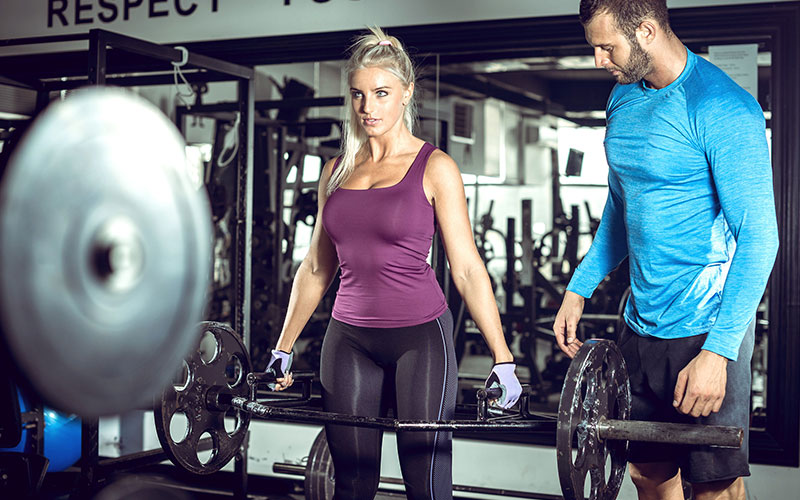If you’re familiar with weightlifting, you may have come across the term “trap bar” before. It’s a specialized piece of equipment that can be used for deadlifts, squats, and other exercises. But have you ever wondered how much a trap bar actually weighs? In this blog, we’ll find out the weight of a standard trap bar and why it differs from a typical barbell.

Contents
How Much Does A Trap Bar Weigh?
A standard trap bar, also known as a hex bar, usually weighs anywhere from 30-50 pounds (13.6-22.7 kg) without any added weight plates.
Some more detailed specifications on trap bar weights:

- Most common trap bar weight range is around 35-45 pounds (15.9-20.4 kg).
- Steel trap bars tend to be on the lighter end, around 30-35 pounds.
- Rubber coated and oversized trap bars are heavier, weighing around 45-50 pounds.
- Olympic-sized trap bars with 2″ hole spacing weighs toward the upper end due to the thicker frame required.
- There are some more lightweight aluminum or composite trap bars that can weigh as little as 25 pounds.
So in general, most standard trap bars made of steel that you’ll see at a gym or in a home gym will likely fall in the 35-45 pound range without any plates loaded on it.
Benefits of Using a Trap Bar:
Here are some key advantages of incorporating a trap bar into your workout regimen:

- Reduced Strain and Joint Stress: The design of a trap bar allows for a more neutral grip and body positioning compared to a straight barbell. This can significantly reduce strain on your lower back and minimize stress on your joints, making it a safer option for those with pre-existing injuries or limitations.
- Improved Lower Body Engagement: The hexagonal shape of a trap bar gives you the ability to stand within the frame, which promotes a more upright and stable position during exercises like deadlifts and squats. This positioning helps to target and activate major lower body muscles, including your glutes, quadriceps, and hamstrings, leading to more efficient and effective workouts.
- Increased Versatility: The trap bar is not limited to just deadlifts and squats. It can also be used for a variety of other exercises, such as shrugs, farmer’s carries, lunges, and even overhead presses. This versatility allows you to challenge different muscle groups and add variety to your training routine.
- Enhanced Grip Strength: The thicker grip of a trap bar compared to a standard barbell can help improve your grip strength. This can have a positive impact on other compound movements, such as pull-ups and rows, as well as everyday activities that require a strong grip.
- Suitable for All Fitness Levels: Whether you’re a beginner or an experienced lifter, the trap bar can be beneficial for individuals at all fitness levels. It allows you to gradually increase the weight as you progress, ensuring that you can continually challenge yourself and make consistent gains in strength and muscle development.
Factors to Consider When Choosing a Trap Bar Weight
When it comes to choosing the right weight for your trap bar, there are a few factors you should consider. Let’s take a closer look:

1. Your Current and Future Lifting Ability
The first factor to consider is how much you can currently lift and how much you’ll eventually be able to lift as you progress in your weightlifting journey.
- Most lifters in their 20s or 30s can deadlift between 2 and 2.5 times their body weight.
- Untrained lifters might only be able to lift around 200 lbs, while more experienced lifters can lift around 350 lbs.
- Only a smaller range of lifters will be able to lift more than 500 lbs.
Based on this, most lifters will do just fine with a standard trap bar weight of 55 lbs with a capacity of 500 lbs.
2. Material, Design, and Size of the Trap Bar
The weight of the trap bar can vary depending on the material used, design, and size of the bar.
- Trap bars are usually built from steel of varying weights.
- The longer the trap bar, the heavier it will be. However, a longer bar also means it has a higher weight capacity than a shorter one.
- The design of the bar can also affect its weight. Some trap bars may not have a bar across the front and could be lighter than those with a bar across the front.
Frequently Asked Questions
How heavy is a deadlift bar?
The standard deadlift bar weighs 20kg or about 44 lbs, which is the typical weight for most barbells.
Are deadlift bars 45 pounds?
Yes, a deadlift bar weighs the same as any standard Olympic barbell, which is 20kg or approximately 45 pounds.
Is a trap bar 55 pounds?
The trap bar itself weighs about 55 lbs and can support a weight capacity of 1000 lbs. It is designed to fit 2-inch Olympic plates.
How much does a trap bar weigh at the gym group?
The Origin Hex Bars, also known as Trap Bars or Shrug Bars, weigh either 25kg or 28kg. They are the ideal specialist barbells for exercises like shrugs, deadlifts, farmers walk, squats, and more.
What is a trap bar best for?
The trap bar is not only great for lower body exercises like deadlifts but also for upper body movements. It can be used for overhead presses, lying tricep presses, rows, landmine movements, and more. Its versatility makes it a valuable tool for strength training.

Hello, I’m Ravindra. Over the years, I’ve immersed myself deeply into the world of fitness and health, transforming both my body and mind. Writing has allowed me to share my journey, insights, and expertise with those just starting out and seasoned fitness enthusiasts alike. Beyond just routines and diets, I believe in inspiring others to adopt a holistic approach to well-being.
